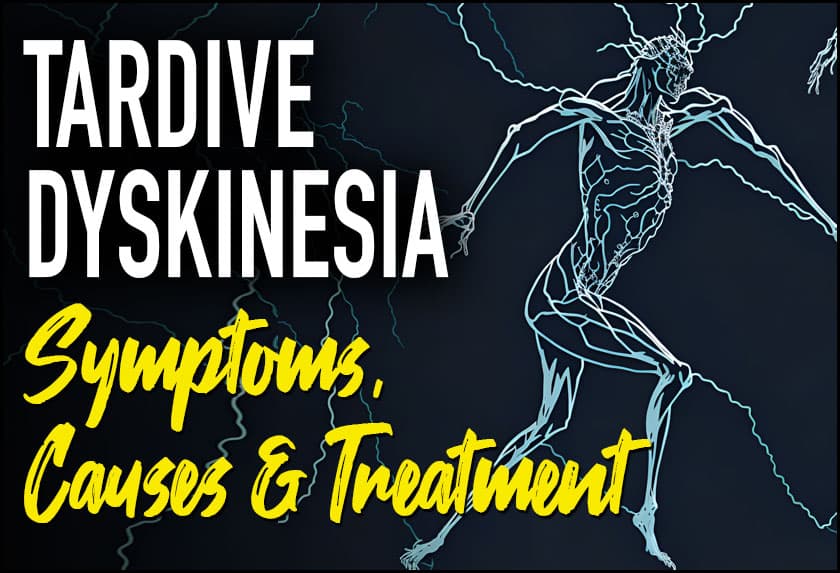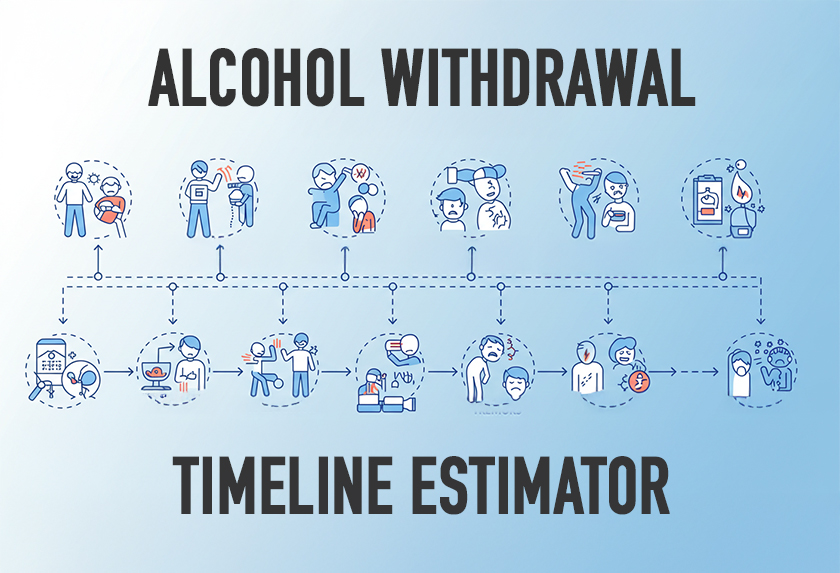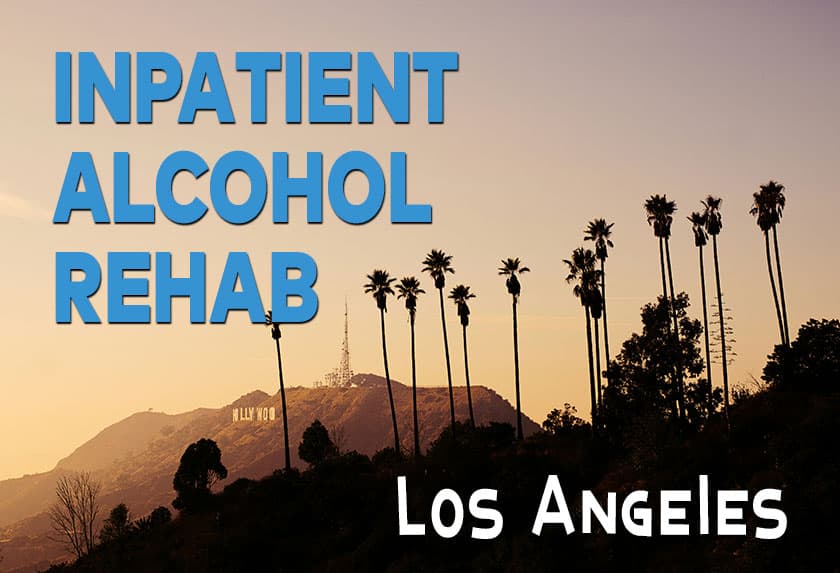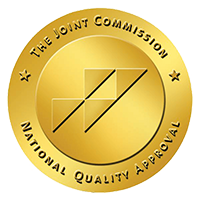What is Tardive Dyskinesia?
So, what is tardive dyskinesia? The word tardive means ‘delayed’ while dyskinesia means ‘an abnormality of voluntary movement’. True to the name, tardive dyskinesia affects the nervous system following the long-term use of medications that affect the dopamine receptors in the brain—causing uncontrollable body movements.
The disorder can be disabling to those affected—especially considering it’s a side effect of medications meant to address already difficult mental illnesses. It’s like adding insult to injury, which is why raising awareness of the condition is imperative.
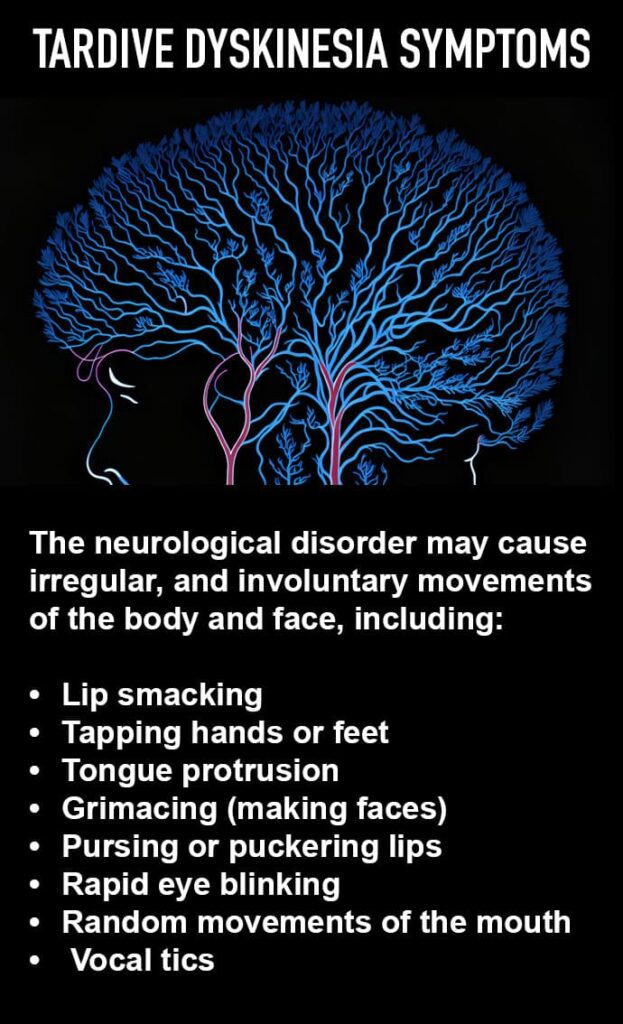
Tardive Dyskinesia Symptoms
If you’re taking medications prescribed for mental health conditions (e.g., bipolar disorder and schizophrenia), nausea, seizures, anxiety, depression, and allergies, it’s essential to recognize tardive dyskinesia symptoms.
The neurological disorder may cause jerky, irregular, and involuntary movements of the body and face, including:
- Lip smacking
- Tapping hands or feet
- Tongue protrusion
- Grimacing (making faces)
- Pursing or puckering lips
- Rapid eye blinking
- Purposeless movements of the mouth or jaw
- In some cases, the condition can also cause vocal tics such as grunting, snorting, or other noises.
Tardive dyskinesia symptoms can vary from person to person—and they may not appear until months or even years after starting the medication that causes the disorder.
The involuntary movements can range from mild to severe; subtle to painful and debilitating. In addition to the physical tardive dyskinesia symptoms, the disorder may lead to social isolation with the affected individuals feeling embarrassed and helpless.
Unfortunately, the warning signs of tardive dyskinesia are easy to miss and the condition may go undetected for a while—whereby it progresses in severity if left untreated. It’s difficult to diagnose due to the following reasons:
- Tardive dyskinesia symptoms do not appear until the drugs have been taken for a long period—sometimes even after the individual has ceased treatment.
- The atypical movements that characterize tardive dyskinesia are similar to those observed in other conditions like Parkinson’s disease, cerebral palsy, Tourette’s syndrome, Huntington’s disease, and dystonia. Doctors have to rule out these other possibilities to diagnose tardive dyskinesia.
If you are taking antipsychotics or any other drugs that carry the risk for tardive dyskinesia, regular screening of the condition is recommended. The standard method used to screen and monitor tardive dyskinesia symptoms is known as the Abnormal Involuntary Movement Scale (AIMS).
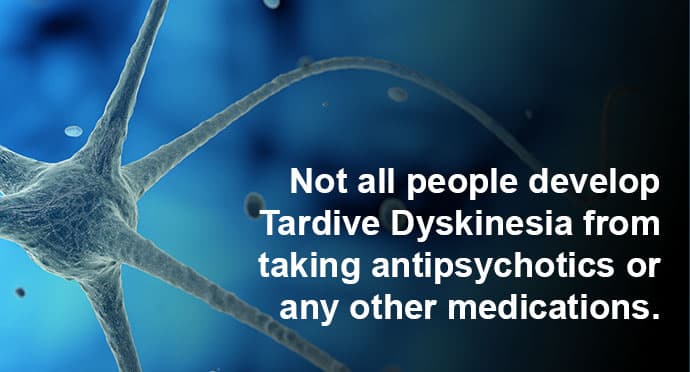
Tardive Dyskinesia Causes
Tardive dyskinesia is a response to certain medications. That is, tardive dyskinesia causes are often linked to the long-term use of prescription drugs that work by blocking dopamine receptors in the brain (dopamine antagonists). These include:
- Neuroleptics (antipsychotics) used to treat mental health conditions like schizophrenia, schizoaffective disorder, bipolar disorder, and psychosis. Antipsychotic drugs are categorized as typical antipsychotics (i.e., first-generation) and atypical (second-generation).
- Typical antipsychotics like Thorazine, Fluphenazine, Haldol, Adasuve, Perphenazine, Orap, Thiothixene, and Trifluoperazine show a tardive dyskinesia rate of 4 percent.
- Atypical antipsychotics include Risperdal, Zyprexa, Seroquel, Geodon, Abilify, Invega, and Latuda. These second-generation drugs are less likely to cause tardive dyskinesia with a risk of 1 percent.
- Antiepileptic drugs used to address seizure disorders and epilepsy.
- Antiemetics (anti-nausea drugs) like Reglan (metoclopramide) and Compro (prochlorperazine).
- Antidepressants such as Amitriptyline and Trazodone.
While the exact tardive dyskinesia causes are not clear, it’s believed that the condition results from faulty dopamine signaling to areas of the brain responsible for controlling movements.
Dopamine is a neurotransmitter that sends messages to receptors in the brain. One theory for tardive dyskinesia causes is that neuroleptics and other dopamine receptor-blocking medications can make dopamine receptors more sensitive as a result of the brain attempting to compensate for the ‘blockage’. This high sensitivity may trigger exaggerated body movements (i.e., tardive dyskinesia symptoms).
However, it’s important to understand that not all people develop tardive dyskinesia from taking antipsychotics or any other medications. The risk of experiencing the movement disorder is higher among:
- Those who have been using neuroleptics for a long period
- People with a substance use disorder
- Females
- Individuals on high doses of the medications
- Diabetics
- People on first-generation antipsychotic
- Older adults
- People with a prior brain injury or dementia
Tardive Dyskinesia Treatment
If you are experiencing tardive dyskinesia symptoms, it’s essential to speak with your healthcare provider as soon as possible. Early diagnosis and treatment can help manage symptoms and prevent them from worsening over time. But tardive dyskinesia is a complex disorder that requires a multi-faceted approach to treatment.
The first step in tardive dyskinesia treatment is to stop or reduce the medication that is causing the condition. However, this can be a difficult decision for individuals who rely on antipsychotic medication to manage their mental health condition. For this reason, it is important to work closely with a healthcare professional to ensure that any changes to your medication are done safely and with close monitoring to avoid the worsening of the original condition.
Your healthcare provider may prescribe new medications or modify the treatment plan to help manage the symptoms. Once the medication is discontinued, there are several tardive dyskinesia treatment options available to manage the symptoms.
The most common treatment is the use of medications that target the dopamine receptors in the brain to reduce the abnormal movements associated with tardive dyskinesia. They include:
- Ingrezza (valbenazine): This is an FDA-approved medicine for tardive dyskinesia that has been shown to significantly reduce AIMS scores.
- Austedo (deutetrabenazine): This is another FDA-approved medicine for tardive dyskinesia that helps ease symptoms.
In addition to medicine for tardive dyskinesia, there are several non-pharmacological treatment options available to manage tardive dyskinesia symptoms such as:
- Cognitive-behavioral therapy helps individuals learn coping strategies to manage the emotional impact of the disorder.
- Physical therapy can help to improve their range of motion and reduce muscle tension.
- Occupational therapy teaches individuals ways to adapt to the movements caused by tardive dyskinesia.
What is the Next Step?
Tardive dyskinesia is a neurological disorder that can cause physical and emotional distress, making it important to know the symptoms, tardive dyskinesia causes, and treatment options available.
If you suspect that you (or a loved one) may be suffering from the condition, it’s important to consult with a medical professional who can provide a proper diagnosis and recommend appropriate tardive dyskinesia treatment options to help manage the symptoms and improve the quality of life.
Don’t suffer in silence, reach out for help.
